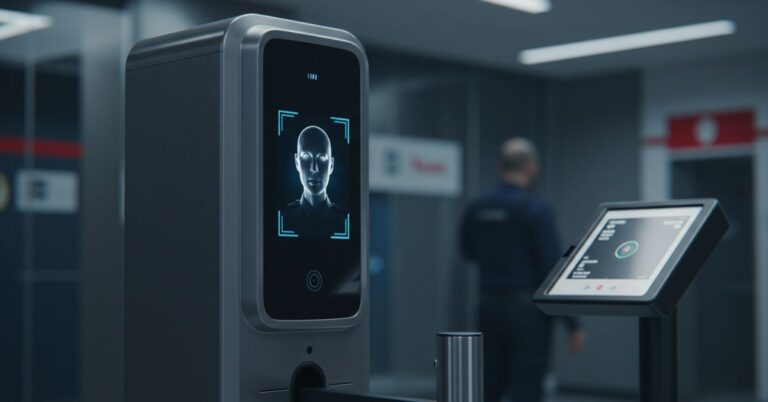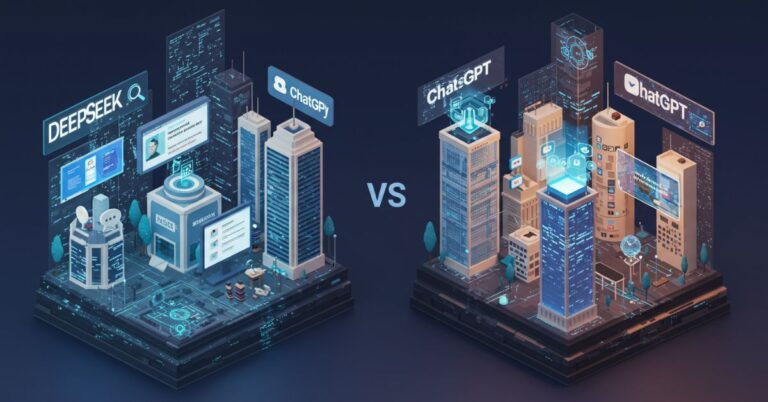Liveness Detection in Digital Marketing: Enhancing Security and Personalization with AI
Contents
- 1 1. Introduction: The Rise of AI in Digital Marketing
- 2 2. What Is Liveness Detection?
- 3 3. The Role of Liveness Detection in Preventing Fraud
- 4 4. Improving Customer Trust and Data Security
- 5 5. Personalization Powered by Real-Time AI Verification
- 6 6. Applications of Liveness Detection in Digital Marketing
- 7 8. The Future of Liveness Detection in Marketing
- 8 9. Conclusion: Embracing AI-Driven Security for Smarter Marketing
1. Introduction: The Rise of AI in Digital Marketing
The data-driven digital economy functions with artificial intelligence (AI) as its primary success factor to implement successful marketing approaches. Brand-audience interaction methods experience continuous transformation because of predictive analytics and customer segmentation alongside content creation and chatbots which are AI-based processes. Marketing interactions need genuine user participation which requires authenticity verification as an essential condition for delivering personalized service. Modern digital marketing implements security system technology for live identity detection traditionally found in those security platforms.
Users’ data security requires improvement because the security threats arise from deepfake assaults linked to social engineering attacks and identity theft schemes. Implementing artificial intelligence through liveness detection reveals to marketers which users belong to the human category or to automated software or fake likeness applications. Authentic customized experiences are now possible for users because digital security gets enhanced via this innovation.
2. What Is Liveness Detection?
The biometric authentication process of liveness detection identifies live human inputs from recorded or synthetic electronic data. The analysis of artificial intelligence operates on multiple data indicators like facial expression patterns and blinking behavior together with voice tone shifts and environmental sound levels to confirm life signs.
Two major classifications exist in liveness detection systems.
This system operates automatically as it performs checks in background space without any necessary user involvement. The system employs artificial intelligence to detect minor biometric signals that demonstrate that subjects are actually alive. Users must complete particular activities like blinking together with head movements and facial expressions to demonstrate their authenticity in Active Liveness Detection. This technology maintains authenticity among digital marketing engagements which include video calls and influencer promotions as well as ad clicks. As an essential weapon, it helps reject fraudulent activity and establish real-time user identity verification.
3. The Role of Liveness Detection in Preventing Fraud
A growing digital platform base results in more attempts at fraud. The online threats faced by marketers include fake accounts operated by bots along with schemes of impersonation which both harm campaign statistics and endanger user information.
The combination of artificial intelligence drives liveness detection which becomes essential for overcoming these dangers:
The prevention of Bot Traffic stops many cases of fraudulent ad impressions as well as fake social media interactions that originate from bots. The system tracks down non-human traffic to deliver reliable data through its liveness detection features.
Deepfake technology enabled better facial and vocal imitation of real persons through AI-manufactured synthetic images and sounds. With live detection algorithms, users can validate their authenticity by showing their real presence.
Users can safeguard themselves through liveness detection because it helps block fraudulent attempts made during social engineering and phishing digital attacks. The system blocks unauthorized users by making users present their identities in real-time through verification processes.
This technology preserves platform credibility for brands by stopping financial fraud on their systems.
4. Improving Customer Trust and Data Security
The public demonstrates greater awareness of privacy concerns that affect their data. People seek proof from brands that their personal information remains secure when they engage with them. Trust-building happens through liveness detection systems that deliver secure time-sensitive verification methods that protect users from fraudulent activities and data breaches.
The implementation of advanced AI verification tools by brands establishes better customer trust in their digital services. Such trust enables businesses to retain customers longer as well as maintain better brand loyalty and develop a positive standing in digital environments.
Both GDPR and CCPA compliance become simpler to uphold through the implementation of strong verification systems. Liveness detection verifies legitimate users as it enables proper service access which safeguards businesses alongside their users from legal and ethical risks.
5. Personalization Powered by Real-Time AI Verification
Digital marketing achieves personalization at the right moment with the help of liveness detection. After successful verification of a user’s identity AI algorithms use demographics and behavior information alongside preferences to customize digital experiences more confidently.
For example:
The digital platform offers verified users custom pricing at specific locations along with customized product recommendations.
Digital marketing campaigns allow marketers to direct precise content offerings to people who have been authenticated as humans rather than wasting money on false accounts.
Post-identity verification brands can deliver customized videos and responsive interactive events for users through their platform.
AI-driven personalization becomes more effective through valid traffic filtering and real user verification which leads to increased engagement and conversion success.
6. Applications of Liveness Detection in Digital Marketing
The modern marketplace integrates Liveness Detection technology for various marketing channel uses. Below is a list of genuine cases showing how this technology improves everyday situations:
a. Secure Login and Authentication
Authentication systems that provide financial and e-commerce services depend on liveness detection to check user authenticity during any login procedure. The system validates that authorized customers only reach crucial protected sections.
b. Influencer and Creator Verification
Through liveness detection brands can verify the authenticity of their influencers along their non-manipulated content performances. Influence marketing becomes more authentic through this verification process.
c. Live Shopping Events
Live commerce is booming. Identity confirmation of both event hosts and audience members ensures viewer trust and increases event participation rates.
d. Ad Click Verification
Click fraud generates unnecessary costs for businesses making advertising budgets go down. Liveness detection systems identify genuine human users behind marketing interactions which provides better return on investment tracking for ad businesses.
e. Virtual Try-Ons and AR Experiences
By verifying that real people utilize AR tools such as virtual try-ons for glasses and makeup the brands achieve better data collection and superior user experiences.
8. The Future of Liveness Detection in Marketing
The developmental path of Artificial Intelligence will directly impact future advancements in liveness detection. Several digital marketing trends will influence the development of liveness detection as follows:
The combination of facial and voice and behavioral biometrics within multimodal liveness detection creates a sound verification system.
Devices at the network’s edge perform liveness tests to process data with speed and privacy improvements compared to cloud servers.
User experience becomes integrated more smoothly through newly developed verification methods that eliminate interface obstacles during user interaction.
Normative frameworks alongside standards will receive increased attention from regulatory agencies because of growing liveness detection implementation within communities focused on social engineering protection and data protection.
The advancement of liveness detection technology with Artificial Intelligence alongside digital marketing practices will result in safer and tailored customer interactions.
9. Conclusion: Embracing AI-Driven Security for Smarter Marketing
The recent implementation of liveness detection systems by digital marketing applies a solution to emerging challenges surrounding fraud besides impersonation and Social Engineering Attacks. The demand from consumers for secure personalized experiences requires marketers to adopt artificial intelligence tools especially liveness detection software to maintain competitive advantage.
The verification of genuine human interaction allows brands to develop personalized marketing content safeguard user privacy and boost their marketing outcomes. The drawbacks related to privacy and bias need attention although the advantages remain substantially greater than the possible drawbacks.
AI-driven marketing progress requires businesses to implement liveness detection systems because they have become an essential component. Marketers who adopt this modern technology will simultaneously protect their platforms and construct an advanced framework that emphasizes trust together with personalized services and astute customer engagement.






